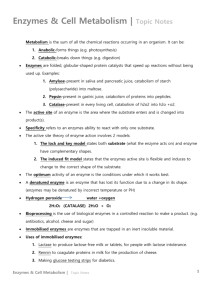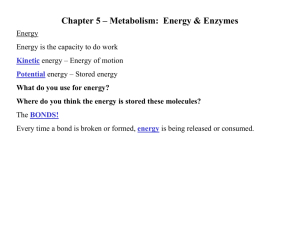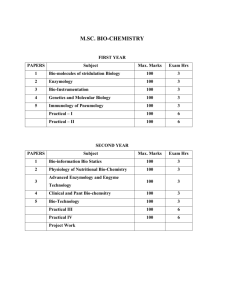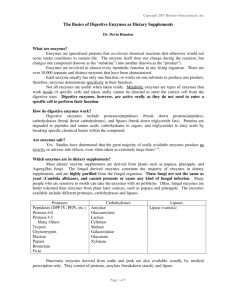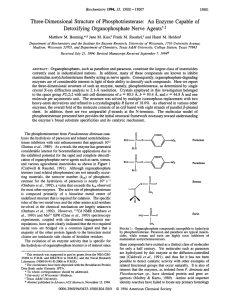Enzymes and Coenzymes
advertisement
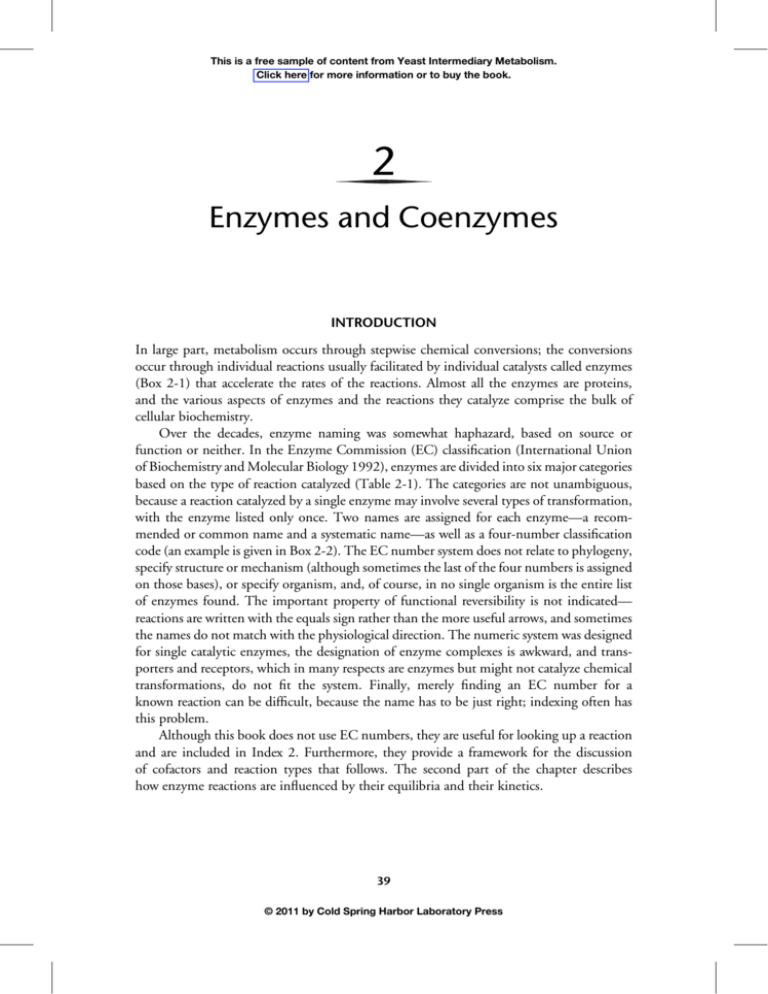
This is a free sample of content from Yeast Intermediary Metabolism. Click here for more information or to buy the book. 2 Enzymes and Coenzymes INTRODUCTION In large part, metabolism occurs through stepwise chemical conversions; the conversions occur through individual reactions usually facilitated by individual catalysts called enzymes (Box 2-1) that accelerate the rates of the reactions. Almost all the enzymes are proteins, and the various aspects of enzymes and the reactions they catalyze comprise the bulk of cellular biochemistry. Over the decades, enzyme naming was somewhat haphazard, based on source or function or neither. In the Enzyme Commission (EC) classification (International Union of Biochemistry and Molecular Biology 1992), enzymes are divided into six major categories based on the type of reaction catalyzed (Table 2-1). The categories are not unambiguous, because a reaction catalyzed by a single enzyme may involve several types of transformation, with the enzyme listed only once. Two names are assigned for each enzyme—a recommended or common name and a systematic name—as well as a four-number classification code (an example is given in Box 2-2). The EC number system does not relate to phylogeny, specify structure or mechanism (although sometimes the last of the four numbers is assigned on those bases), or specify organism, and, of course, in no single organism is the entire list of enzymes found. The important property of functional reversibility is not indicated— reactions are written with the equals sign rather than the more useful arrows, and sometimes the names do not match with the physiological direction. The numeric system was designed for single catalytic enzymes, the designation of enzyme complexes is awkward, and transporters and receptors, which in many respects are enzymes but might not catalyze chemical transformations, do not fit the system. Finally, merely finding an EC number for a known reaction can be difficult, because the name has to be just right; indexing often has this problem. Although this book does not use EC numbers, they are useful for looking up a reaction and are included in Index 2. Furthermore, they provide a framework for the discussion of cofactors and reaction types that follows. The second part of the chapter describes how enzyme reactions are influenced by their equilibria and their kinetics. 39 © 2011 by Cold Spring Harbor Laboratory Press







